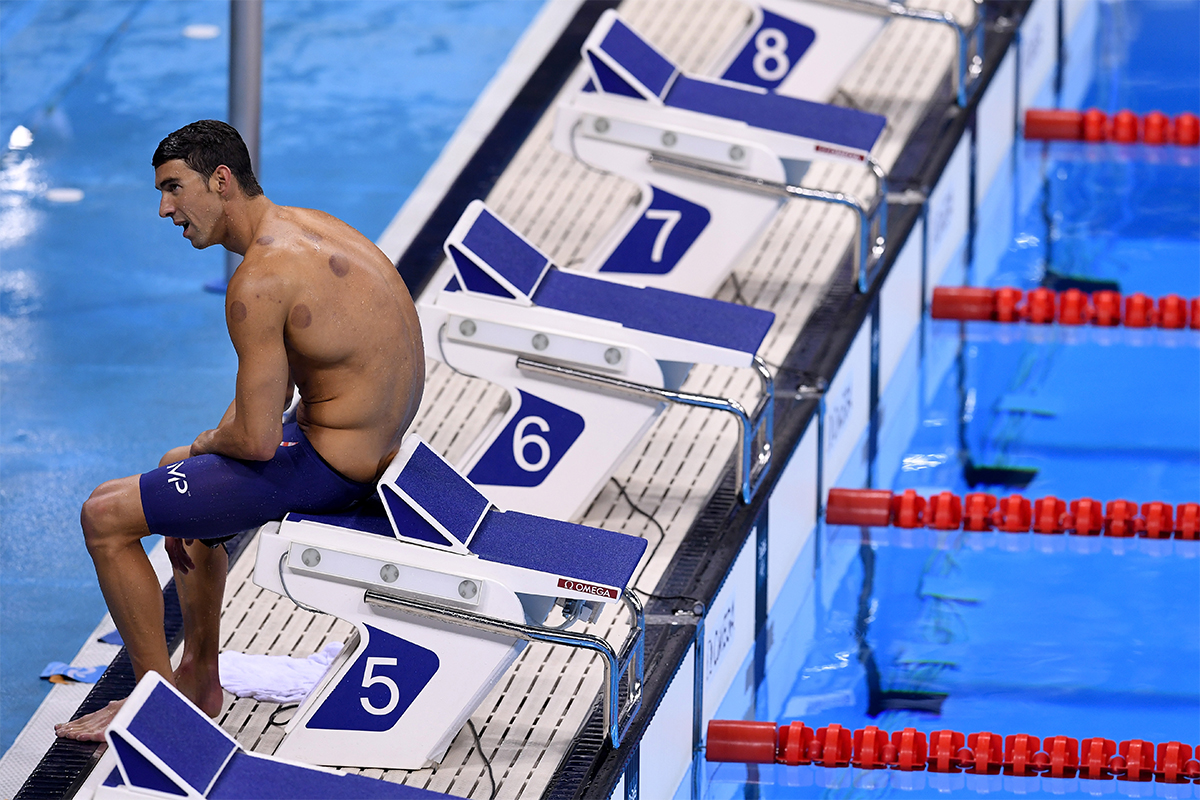It’s been five years since Michael Phelps showed up to the 2016 Rio Olympics with a bunch of dark, perfectly circular bruises all over his back and shoulders. That was the first time that most of the Western world had heard of “cupping,” though the recovery therapy has been practiced in Chinese and Middle Eastern medicine for more than 1,500 years. The Taoist alchemist Ge Hong was on his cupping grind in the fourth century.
The method has changed a bit over the years, but the goal remains the same: divert blood flow. The idea is to send blood to high-use, pressure-point areas of the body, and reduce soreness or pain. These days, practitioners place heated cups directly onto the skin; as they cool, the glass suctions and the skin raises/hardens into small lumps. The discoloration that Phelps made famous occurs after blood rushes to the region and vessels start to burst.
Lately, the tradition had made a bit of a comeback in the world of wellness, especially after Dwayne Johnson shared a post-therapy mirror selfie with his 222 million followers.
In the photo, The Rock has about 25 contusions up and down his back, most of them situated directly around the spine. In theory, that’s exactly where he would want an uptick in blood circulation. To maintain his physique, The Rock is constantly in the gym working on heavy, compound movements, which puts a hell of a strain on the back. But while most online have blindly thrown “clapping” emojis at Johnson for working hard and taking care of his body, some medical professionals have reminded the public that there’s little serious research out there to confirm that cupping therapy actually works.
According to the National Center for Complementary and Integrative Health, “there’s been some research on cupping, but most of it is of low quality…[it] may help reduce pain, but the evidence for this isn’t very strong.” Over the years, studies have confirmed what is pretty obvious to the naked eye — cupping does something for circulation — but every time researchers gather together some evidence that cupping can impact pain relief, they backtrack on their own conclusions, acknowledging that without a “blinded placebo-controlled trial” (easy to pull off when testing medicine, much harder when you need to functionally test people by putting hot glassware on their bare backs), their studies leave much to be desired.
That said, cupping can’t hurt you, though you should avoid it if you’re a child, senior citizen or pregnant. And if you’ve got an open wound or lesion on your back, definitely stay away. But for the most part, the worry here is merely that it’s another case of pseudoscience being passed off as legitimate recovery therapy.
What should we make of The Rock’s involvement with cupping, then? Or any celebrity who has tried and/or posted about it? Well, at the risk of sounding cynical, don’t be surprised if some people are just looking to show off those iconic bruises. Medical social-media personality Dr. Rohin Francis recently pointed out on YouTube that there is an outsized veneration for thousands-year-old wellness practices — they become “trends,” centuries after their invention, because people like to assume that the ancients were exceptionally wise. We can excuse Phelps and other Olympians, perhaps. That was half a decade ago, and a large body of cupping research has been released in the years since.
But it’s hard to ever fully trust the modern wellness influencer, and that even extends to The Rock. They always need content. This sort of post feels like Johnson is trying to confer some indie edge to his fitness regimen.
But that’s silly. And, unsurprisingly, quite expensive. Cupping sessions start in the $80 range. The Rock has every wellness tool at his disposal. He isn’t desperate for an alternative method of pain relief. He can get a high-quality massage or hop in a cryotherapy chamber with the snap of a finger. So, does he need to mimic Ge Hong? Or Michael Phelps? Of course not. But is it good for the brand? You bet.
The Charge will help you move better, think clearer and stay in the game longer. Subscribe to our wellness newsletter today.
